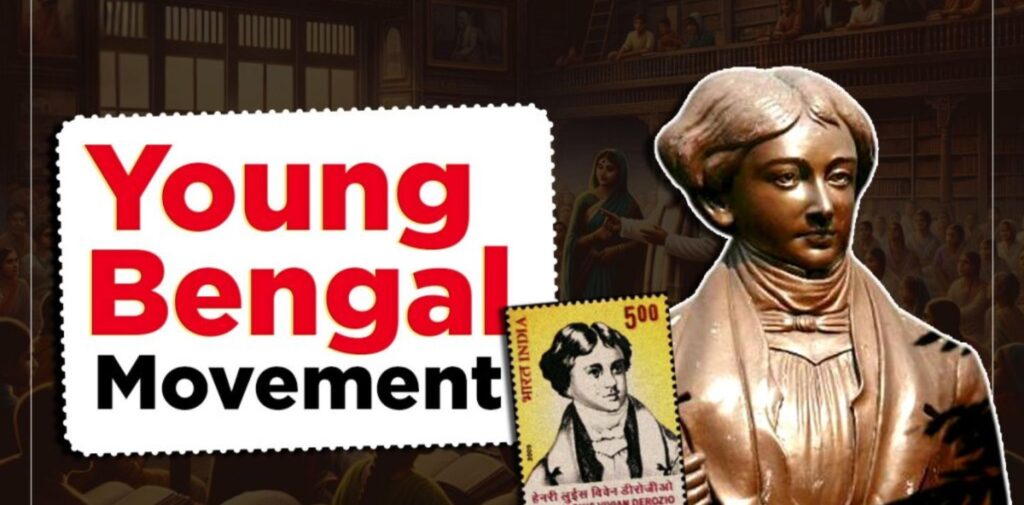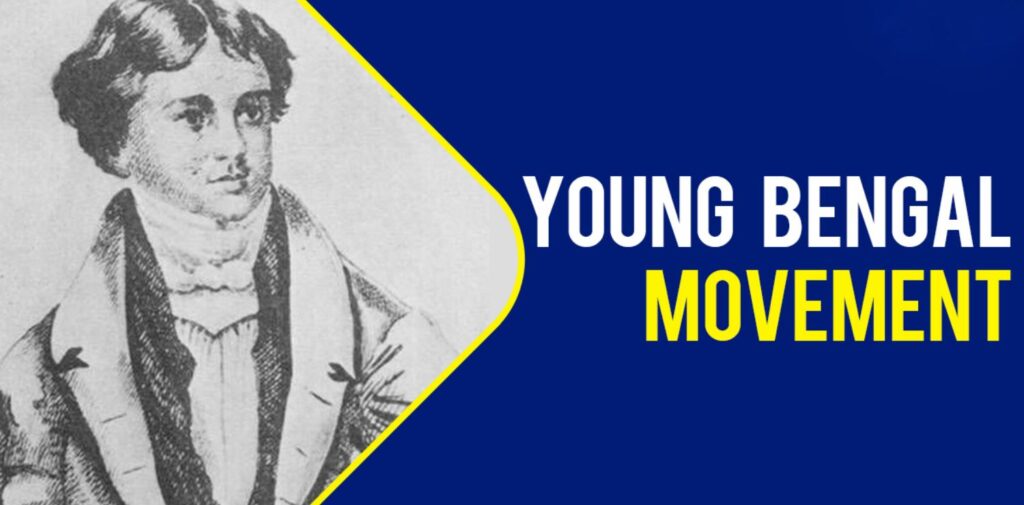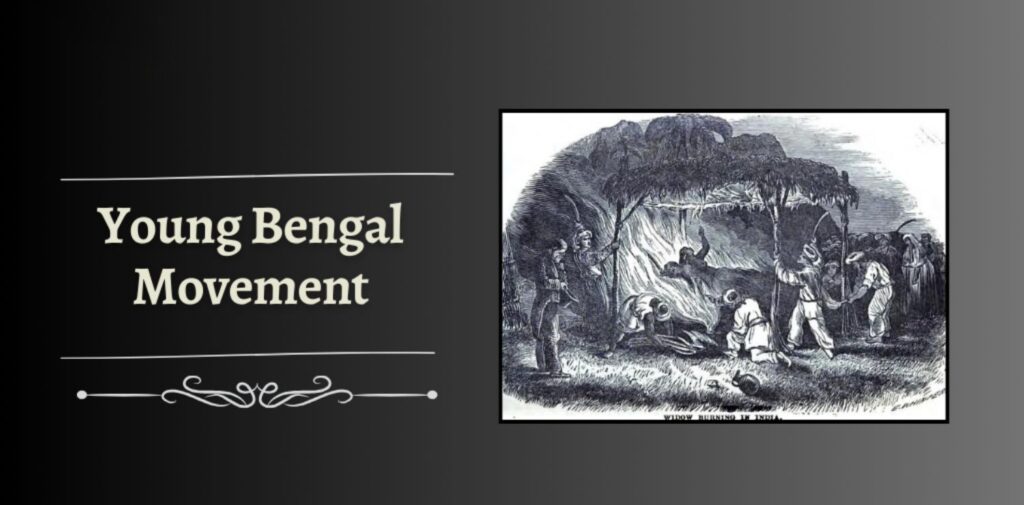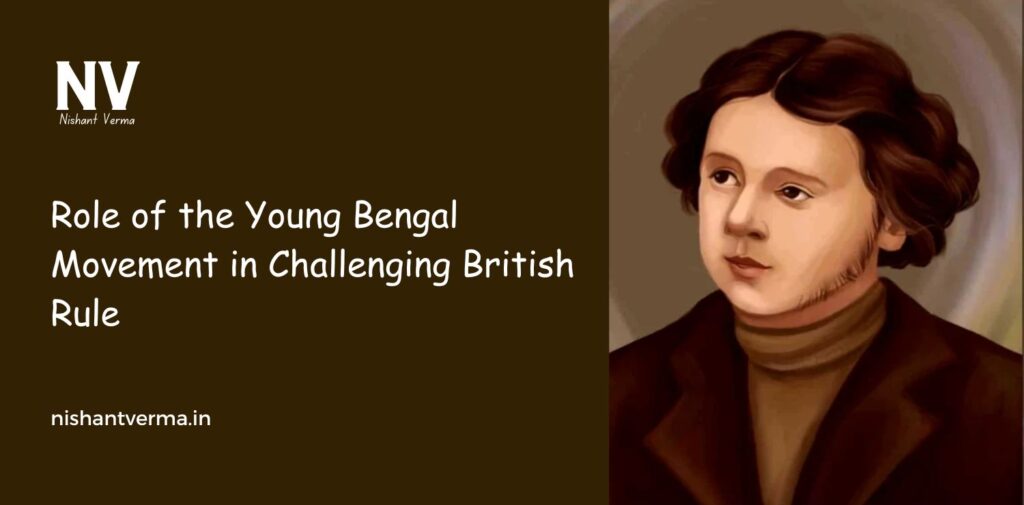The struggle for India’s independence did not begin in one single moment or with one single event. It was a long and hard fight, with many people joining in at different times. One such important movement was the Young Bengal Movement, which was one of the first groups to challenge British rule in India. This movement played a significant role in spreading ideas of freedom, equality, and nationalism. In this article, we will learn about the Young Bengal Movement and how it helped in the fight against British rule.
What Was the Young Bengal Movement?
The Young Bengal Movement was a group of young intellectuals, students, and thinkers who wanted to bring about social and political change in India during the early 19th century. This movement started in Bengal, which is a region in eastern India (today, it is divided between India and Bangladesh). The Young Bengal Movement was not only about challenging the British rulers but also about modernizing Indian society.
The movement is mostly remembered for its focus on education, social reforms, and freedom of thought. It was led by a brilliant young thinker named Henry Louis Vivian Derozio. Derozio was an inspiring teacher at the Hindu College in Calcutta (now Kolkata) and his ideas sparked a wave of new thinking in the minds of his students.

The Role of Henry Derozio
Henry Louis Vivian Derozio was the heart of the Young Bengal Movement. He was a teacher and a philosopher who believed in challenging old traditions and questioning things that were wrong. Derozio was born in 1809 and was of Portuguese and Indian descent. He joined Hindu College as a teacher in 1826 and soon became popular among the students for his bold ideas.
Derozio believed that the British were not just ruling India but were also keeping the country backwards in many ways. He encouraged his students to think freely, question old ideas, and seek the truth. Derozio’s students became leaders in the movement. They were known for their boldness and their willingness to challenge the authority of both the British and traditional Indian society.
Key Ideas of the Young Bengal Movement
The Young Bengal Movement was based on some very important ideas that were new at the time. These ideas were:
- Social Reform: The young thinkers believed that Indian society needed change. They wanted to get rid of old customs that held people back. For example, they wanted to challenge things like the caste system, child marriage, and the poor treatment of women. They also believed in the importance of education for all, especially women.
- Freedom of Thought: One of the main ideas promoted by the Young Bengal Movement was the importance of thinking freely. They encouraged people to ask questions and to challenge traditional beliefs. Derozio and his followers wanted to break away from old customs and superstitions that were stopping India from moving forward.
- Equality and Justice: The Young Bengal Movement stood for equality for everyone. They believed in equal rights for all people, regardless of their religion, caste, or gender. They also called for justice and fairness, where everyone would be treated with respect.
- Nationalism: While the Young Bengal Movement focused a lot on social issues, it also had an important message of nationalism. They believed that India should be free from British rule and that the country should rise to be strong and united. The movement created a sense of pride in being Indian and the need to fight for India’s rights.

What Did the Young Bengal Movement Do?
The Young Bengal Movement was not just about ideas, it also led to many actions that challenged British rule and old traditions. Here are some of the key things that the movement did:
- Student Movements and Protests: The students of the Hindu College, led by Derozio, were very active in protests and student movements. They organized meetings, debates, and lectures on issues like education, social reforms, and nationalism. These discussions helped spread the ideas of the Young Bengal Movement to a larger audience.
- Challenging Social Norms: The Young Bengal Movement challenged many of the traditional customs of Indian society. For example, they spoke out against the rigid caste system, which treated people differently based on their birth. They also believed in the empowerment of women, advocating for their right to education and better treatment in society.
- Influencing Future Leaders: The ideas of Derozio and his students influenced many important leaders in India’s independence movement. Although the Young Bengal Movement was not a large, mass movement like some others, its intellectual and social influence played a big part in inspiring future leaders like Rabindranath Tagore, Keshab Chunder Sen, and Surendranath Banerjee.
- Promoting Western Education: One of the key beliefs of the Young Bengal Movement was the importance of education. They believed that the British education system would help Indians become more aware of their rights and freedoms. Many of the Young Bengal thinkers promoted the idea of getting an education that was based on Western ideas of freedom, science, and democracy.
The Young Bengal Movement’s Conflict with the British
The British rulers were not happy with the Young Bengal Movement because it went against their control over India. Derozio and his students questioned the British system and criticized the way the British ruled the country. This angered the British, and they started to put pressure on the movement.
- Derozio’s Dismissal: In 1831, Henry Derozio was dismissed from his teaching position at Hindu College by the British authorities because of his ideas. He was accused of spreading “dangerous” thoughts and promoting rebellious activities. However, even after being dismissed, Derozio continued to inspire his students, and his ideas kept spreading.
- Suppression by the British: As the movement grew, the British government took steps to control it. They tried to stop the students from meeting and discussing ideas. They were worried that the Young Bengal Movement would lead to larger protests against British rule. But the movement had already sparked a fire in the minds of many young Indians, and the spirit of questioning and challenging continued to grow.

Impact of the Young Bengal Movement
Even though the Young Bengal Movement was not able to create an immediate revolution against British rule, it had a lasting impact on India’s fight for independence. Here’s how:
- Intellectual Revolution: The Young Bengal Movement helped bring new ideas to India. It made people realize the importance of education, social reforms, and nationalism. The movement also encouraged people to think for themselves and challenge authority.
- Inspiring Future Freedom Fighters: The Young Bengal Movement inspired many future leaders of the Indian independence movement. Leaders like Swami Vivekananda and Raja Ram Mohan Roy carried forward the ideas of social reform and nationalism. They worked towards a united India, free from British rule.
- Modernizing Indian Society: The movement played a role in bringing modern ideas to India. The ideas of rational thinking, individual rights, and social equality helped India move towards a more progressive and united nation. These ideas would later be central to India’s independence struggle.
Conclusion
The Young Bengal Movement was a very important chapter in the history of India’s fight for freedom. Led by Henry Derozio, this movement brought forward ideas of social reform, education, equality, and nationalism. Even though the movement faced opposition from the British and did not immediately lead to independence, it planted the seeds of change that would grow into a larger struggle for India’s freedom.
The Young Bengal Movement showed that even a small group of young thinkers and students could challenge the mighty British Empire. It inspired future generations to continue the fight for freedom and equality, helping India move closer to independence. The courage and boldness of the Young Bengal Movement remind us of the power of ideas and the importance of standing up for what is right.




